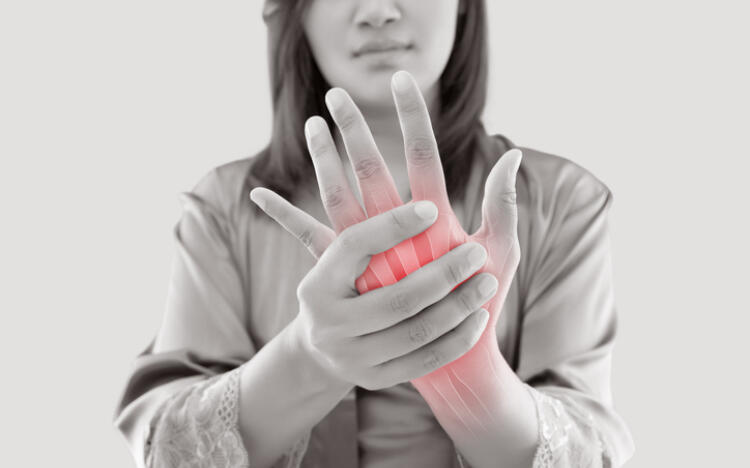Gout occurs as a result of high uric acid levels in the body. It is one of the most common types of inflammatory arthritis, with around 1.7% of the Australian population thought to be affected, and this rate is even higher in Aboriginal Australians (9.7% in men and 2.9% in women, in 2002).
Prevalence rates are increasing globally, associated with increases in population overweight and obesity. Anyone can get gout, but it is seen more commonly in older men.
Symptoms
Symptoms of gout can come on very quickly, often overnight. Gout can affect any joint of the body, but it commonly affects the joints of the big toe. Joints become very red, swollen, and extremely painful.
Without the correct treatment, an attack of gout can last for around one week. While another attack may not come on for many months, unless your gout is well-managed, the time between attacks can become shorter, and each attack more severe. Higher uric acid levels over an extended period of time can lead to permanent joint and cartilage damage, and constant mild pain and inflammation.
Diagnosis
Diagnosis of gout is confirmed on the basis of urate crystals found in samples of joint fluid. A small amount of fluid is withdrawn by needle from one of the affected joints, and examined under a microscope. If joint fluid isn’t available, a provisional diagnosis can sometimes be made on the basis of other clinical and laboratory features.
If crystals are not seen in the joint fluid, other causes of your symptoms will be investigated, such as infection.
Treatment
Treatment of gout follows a two-pronged approach. On one side, medicines such as non-steroidal anti-inflammatory drugs (NSAIDs), colchicine or corticosteroids are often used in the management of an acute attack of gout. The types of medicines your doctor will prescribe will depend on whether you are taking other medicines for different conditions.
However, you will also need to take medicines that lower your uric acid levels, and prevent future attacks of gout. These medicines need to be taken regularly, regardless of whether you are having any gout symptoms.
Living with gout
Following a healthy lifestyle, such as keeping off excess weight, and avoiding sugary drinks and excessive alcohol can also help with the management and prevention of gout. Early diagnosis and the right treatment are crucial in preventing long-term complications from gout. Untreated gout can cause permanent damage to the joints. Know your target uric acid level and learn ways to prevent gout attacks.
Further reading about gout
Arthritis Australia has good information about gout and how to manage it.
